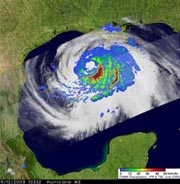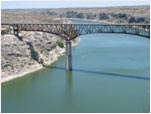Legacy Cycle A: Water Basics
The water on Earth is largely derived from its interior and formed as the planet cooled. Water can change states (liquid, vapor, and ice) in the water cycle and has unique chemical and physical properties, including its ability to absorb and release heat, reflect sunlight, and dissolve other materials.
Water is found in the ocean; in the atmosphere; on land in rivers, lakes, glaciers, and wetlands; and underground in rock formations and in pore spaces in rocks and sediment. Although water cycles between these reservoirs, the total amount does not change significantly over human timescales.
Water is distributed unevenly around the planet and within Texas as a consequence of Earth processes, including geologic processes, and ocean and atmospheric circulation, which together drive weather and climate.
Earth Science Literacy Principles: The Big Ideas and Supporting Concepts of Earth Science (2009)

Challenge 1: How Fair Are the Water Properties?
Your high school is participating in the state science fair. Your class will develop a series of presentations for the science fair that focus on water's molecular structure and unique properties, including its importance as a universal solvent, its phase changes, its special ability to hold heat and to form an acid or a base, and its role in sustaining life.
Challenge 2: One Bite Can Kill You
As a member of the Centers for Disease Control (CDC) you are tasked with examining the impact of hurricanes that struck the Gulf Coast from 1960 through 2009 on the outbreak of mosquito-borne diseases such as malaria, cholera, West Nile virus, and Dengue fever.
Challenge 3: WHO Can Map This?
The World Health Organization (WHO) is updating its atlas and you have been asked to create five maps. Three of the five maps must show the worldwide, statewide, and regional distribution of water. Another map must show the geological processes that have occurred in Texas thus creating the distribution of water, and the fifth map must show the precipitation patterns in Texas.
Target Audience: High school, especially students taking Integrated Physics and Chemistry, Physical Science, Chemistry, Biology, Earth and Space Science, Geology, Oceanography, Meteorology, and World Geography.